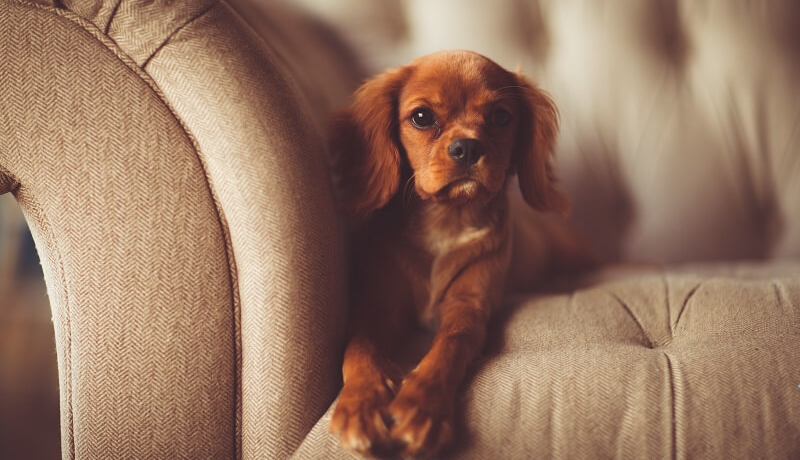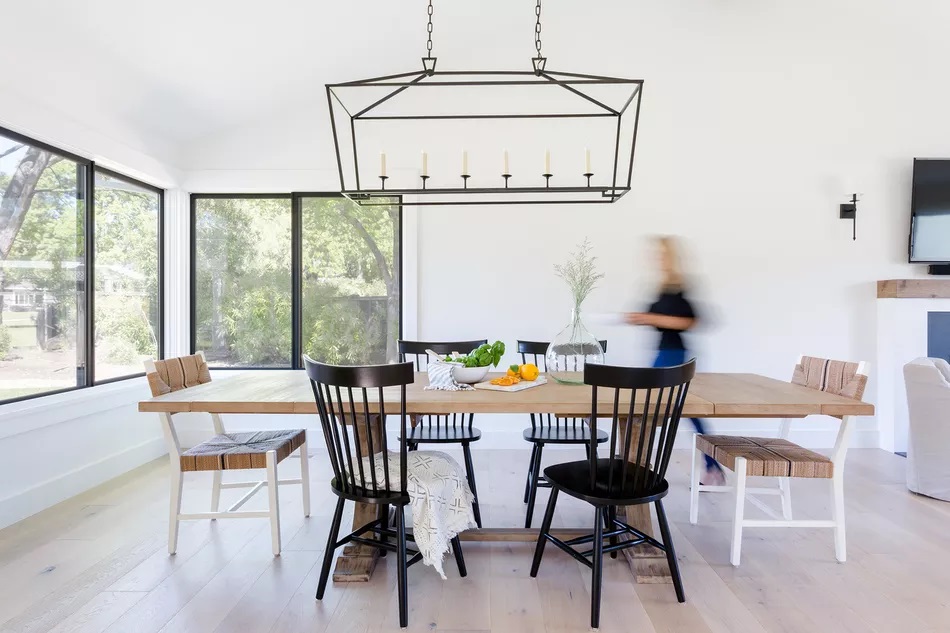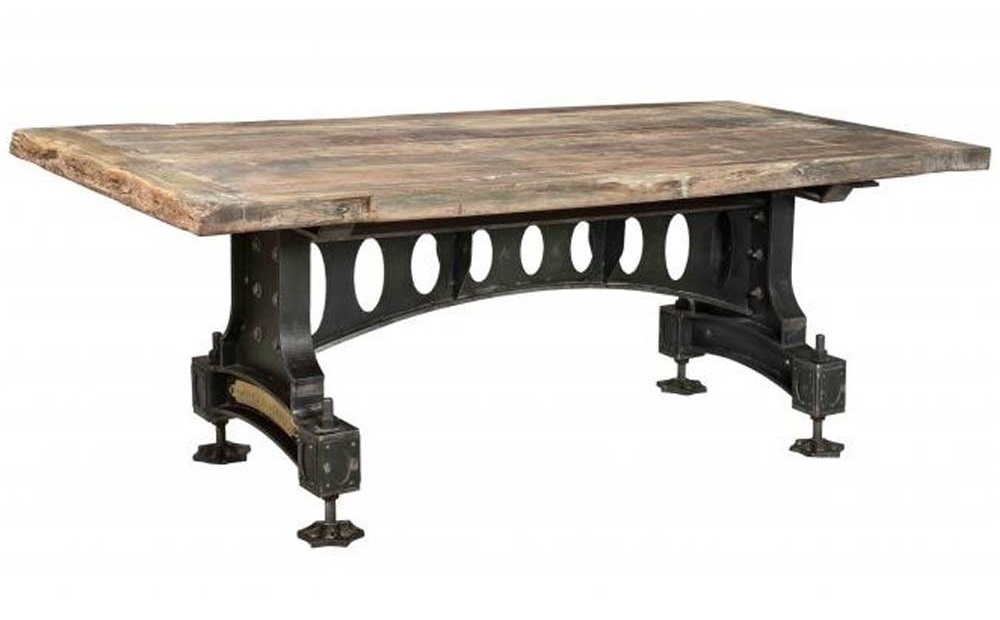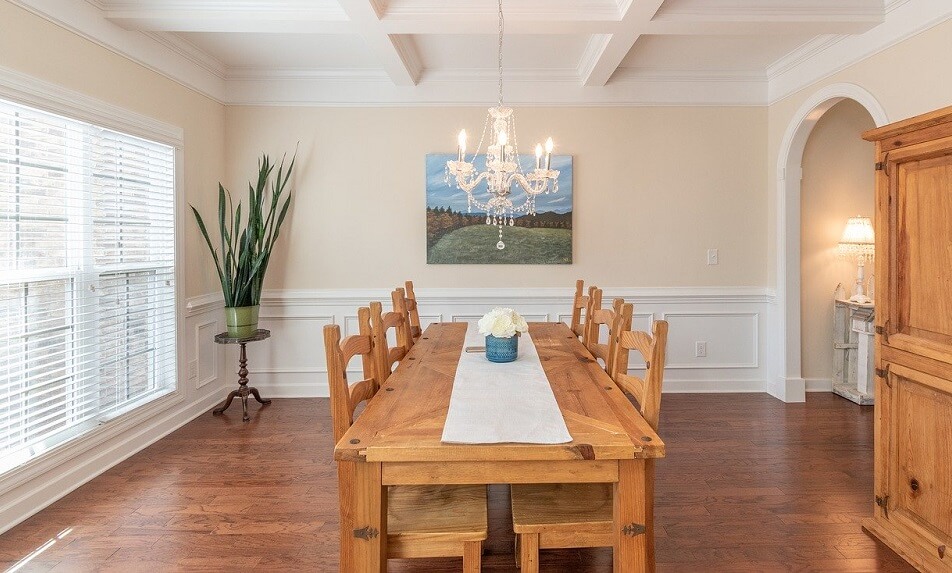Protect Furniture From Pets
We know how important your furniture is. Real wood furniture, in particular, can last a very long time – provided it’s not damaged by cat scratching or dog chewing! Read our top tips on how to protect furniture from pets, including dog hair and cat pee, and ensure your furniture stands the test of time no matter what furry friends you have in the house.
Skip to:
Cat scratching
Cat pee
Puppy chewing
Pet hair
Protect furniture from cat scratching
Cats need to scratch and unfortunately will often use your furniture to do so! Scratching helps to stretch out a cat’s back, from her front paws all the way down to her hind legs. It also helps to keep her claws sharp and healthy, which is why scratching is so instinctive for any cat. However, there are plenty of ways to protect furniture from cat scratching.
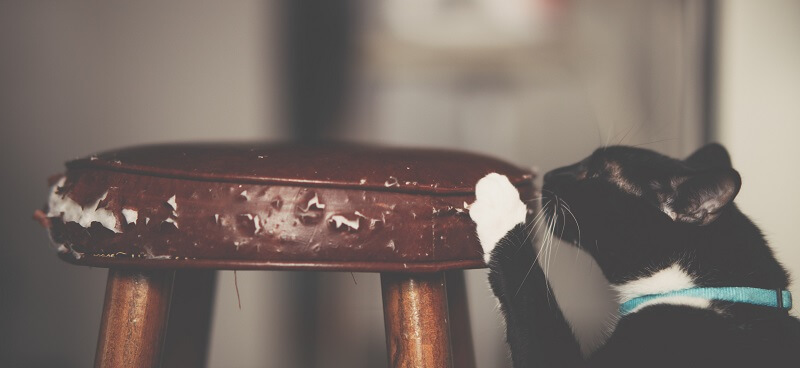
Buy a scratching post
Because cats need to scratch, it’s important that they have an alternative to your furniture. Sometimes cats will use natural scratching posts outside, like a tree, but cats that spend a lot of time inside will need an indoor alternative.
A scratching post provides your cat with somewhere she is allowed to scratch that isn’t your furniture. Ensure it has a heavy base that doesn’t wobble, as this might put your cat off, and that it’s tall enough that she can stretch satisfactorily.
Be sure to praise her (or him!) when she uses the scratching post as this will help her to understand that scratching this post is allowed while scratching the furniture is not!
If your cat’s already in the habit of using the furniture, this might not solve the problem entirely but is the best place to start.
Positioning the scratching post
To help your cat transition to scratching the post instead of the furniture, you’ll need to place the post in the right spot.
Try it in a place where your cat likes to relax, or next to the furniture that they’ve been scratching previously. Most cats like to scratch when they’ve just woken up from a nap so this will encourage her to choose the scratching post over the furniture.
Creating interest
It might take some time for your cat to show any interest in the new scratching post, especially when she’s got furniture that’s always worked before!
Try scenting the new post with catnip or honeysuckle – two scents that cats find very appealing.
If your cat investigates it, praise her gently or give her a treat.
Helping your cat ‘discover’ the scratching post for herself is an extremely effective way to make her want to come back to it. Use a wand toy, or another toy, to play with your cat and encourage her to chase near the post. Waggle the toy behind it or swipe it across the post so she interacts with it. Once she’s discovered it, and how scratchable the material is, she’s very likely to come back to it herself.
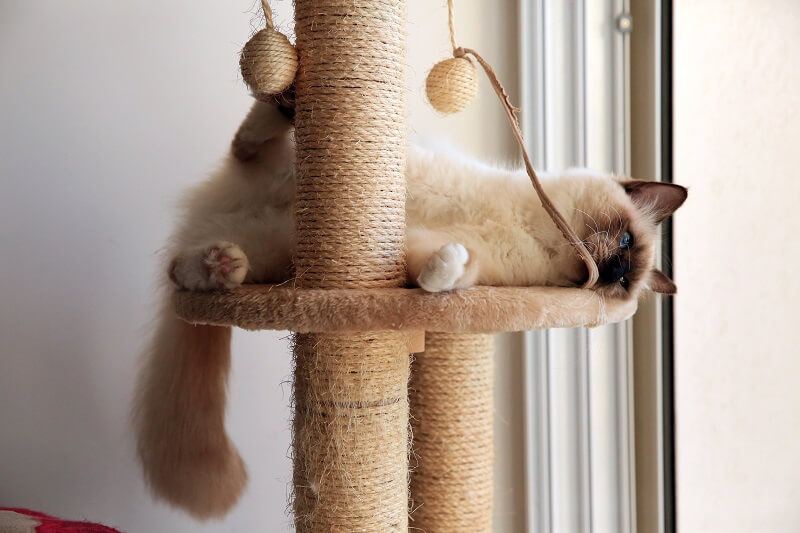
Cleaning the furniture
Another reason a cat might interact with the furniture over the scratching post is because it smells like them. As their scent fades from it, they’ll instinctively want to top it up to ensure it stays marked.
To protect furniture from pets, clean the scratched furniture to remove the scent of the cat – remember that you won’t be able to smell it yourself as cats’ noses are much more sensitive than ours!
When you clean the furniture, you want to ensure you’re not going to damage the material. For fabric furniture, use a mild, non-toxic detergent that is unlikely to stain. If you’re worried, test it on a small part of the furniture that’s not easily seen before cleaning the whole area.
Wooden furniture won’t hold the cat’s scent in the same way as fabric furniture, but if it’s a problem, try wiping it down. You don’t want to get wood furniture wet, so be sure that the cloth is only just damp and that you dry any moisture off it afterwards.
Most cats have a particular aversion to citrus smells. Choosing a citrus-scented detergent can be an effective way to deter your cat from the furniture.
Be sure to keep your cat away from the furniture until it’s dried.
Many people choose to also cover up their furniture for a short time until their cat has got used to using the new scratching post. This can help deter her away from old habits and protect your furniture from cat scratching. You could tuck a sheet around the item, for example.
Boredom Scratching
If a cat is bored it might scratch the furniture as something to do. Make sure your cat has got toys that it can engage with to keep it physically and mentally active!
Protect From Cat Pee
The majority of cats learn quite quickly to use their litter box as they’ll be taught to do so by their mothers. However, some cats take longer to learn than others or have other issues that cause them to act out. For example, it’s more common for rescue cats to pee on furniture as they adjust to a new home.
It’s important to stop a cat from peeing on your furniture as soon as possible. Not just for the sake of your furniture, but also because the longer they do it, the harder it is to stop them.
Trip to the Vets
Cats sometimes start peeing around the home because they’re unwell or have an infection. Take the cat to the vets to check that she’s okay. The vet might also suggest a solution that will help you to prevent her from peeing on the furniture.
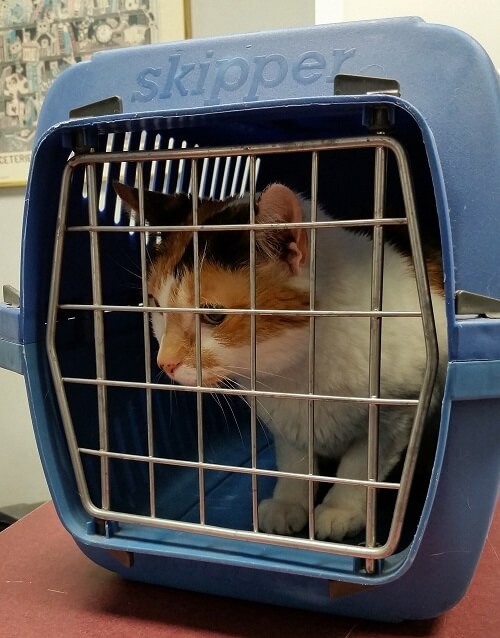
Litter boxes
Firstly, ensure your cat has got plenty of access to litter boxes. It can be worth having multiple boxes in the house. If she is used to being an outdoors cat, provide her with a cat flap or make sure you let her outside regularly as she might prefer to go outside rather than in.
It’s also important to keep the litter box clean. A cat might start to pee on the furniture if she doesn’t like the litter box, which can happen if it’s not cleaned regularly enough.
Cats can also be fussy about the type of litter in their box. The best choice is usually unscented clay litter, but try some different types and see if she prefers one over another.
Sometimes cats don’t like where a litter box is placed. If it’s in a busy area or next to where she eats, try moving it to another place. Be sure to show her where it is though!
Close the door
If there’s one item of furniture that your cat pees on, make sure she can’t get into that room when you’re not there. Close the door whenever you leave and make sure she comes with you. If you can break the habit of peeing on it, then she might not do it again.
Attention
Cats sometimes pee on furniture for attention or out of frustration – if she’s bored, for example. Try playing with her every day and ensuring she has toys to occupy her. If you’ve rescued her recently, find out if she was an outdoors cat. It might be that she’s frustrated by not being able to explore as she used to. Give her plenty of stimulation and see if that solves the problem.
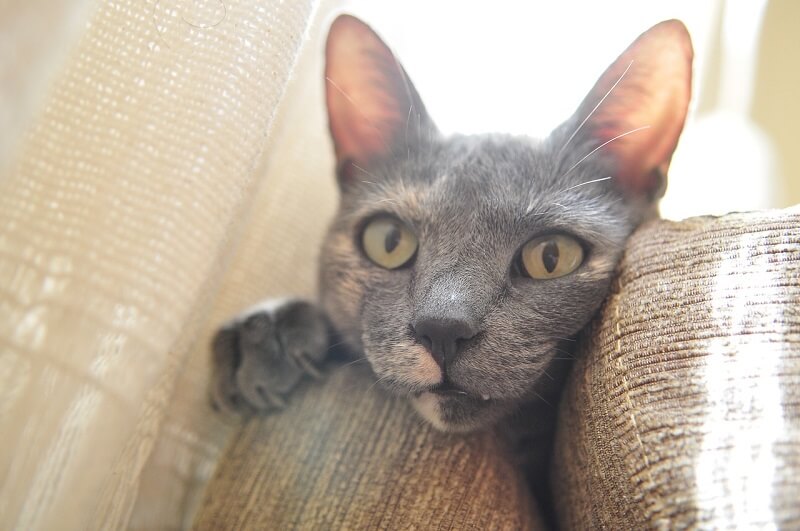
Deterrent
Deter your cat from the furniture by making it smell unpleasant to her. Cats particularly don’t like citrus smells and will avoid them. You can also make it unpleasant to be on by placing tin foil on the furniture.
It’s important that you remove the smell of the urine as much as possible. If she can smell herself there, she will want to continue scenting it as the smell starts to fade.
Stop A Puppy Chewing Wood Furniture
Naturally, puppies love to chew! It helps them to develop a strong jaw and teeth, relieves frustration and is lots of fun. However, some pups take a particular liking to chewing on wood, which isn’t great news for your furniture.
Provide other chews
Puppies need to chew something. If they don’t have anything they’re allowed to chew on, then they’ll munch on things they aren’t! Provide a few different kinds of chew toys as dogs usually like variety, even if they have a favourite.
Some dogs will prefer one texture over another. If your pup is really keen on wood furniture, find a chew that mimics this texture more, or let him chew up branches in the garden.
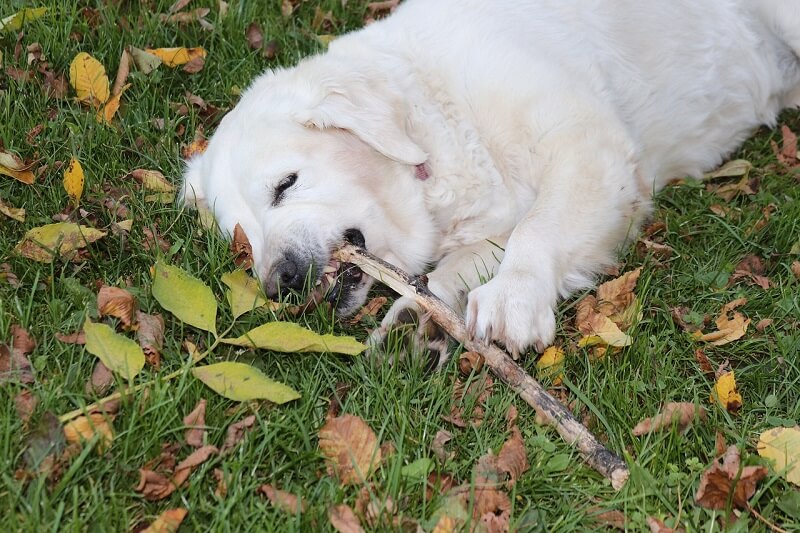
However, even if he has plenty of choice, he might still go for the furniture so there are other options to try…
Make it taste bad
No puppy is going to chew on something that tastes bad. There are lots of products on the market that are designed to be applied to furniture (or other items) to put a dog off when they chew it.
When you’re applying something to your wood furniture, check first that it’s not going to stain or damage the furniture. Remember that moisture is bad for wood. It’s a good idea to test the substance on part of the furniture that’s out of sight first, like the underside. Leave it for a few hours to check that it doesn’t cause any discolouring.
You can create a home remedy too. Dogs usually dislike bitter tastes so a mixture that includes lemon or vinegar can be effective. Be sure to only ever mix ingredients that are safe for dogs to ingest and always test a very small amount of solution on the underside or an out-of-sight part of the furniture first. Don’t use it if it causes discolouration or damage.
Prevent boredom and anxiety
Puppies, or even older dogs, will chew more if they’re bored or anxious. Solving these problems will reduce the amount of chewing.
Boredom
Dogs need to have mental stimulation in order to thrive. If they become bored, they’re more likely to show destructive or otherwise naughty behaviour, like chewing furniture. Some breeds of dogs will need more stimulation than others – often dogs originally bred for working, such as border collies, jack russells and poodles.
Be sure you take your dog out on lots of walks, ideally going to different places so he can smell different things and have different experiences. Teaching him tricks will help to engage him or try setting up tests and games, like hiding things under cups so he has to smell them out.
Be sure to give any dog plenty of attention and playtime to help stave off boredom.
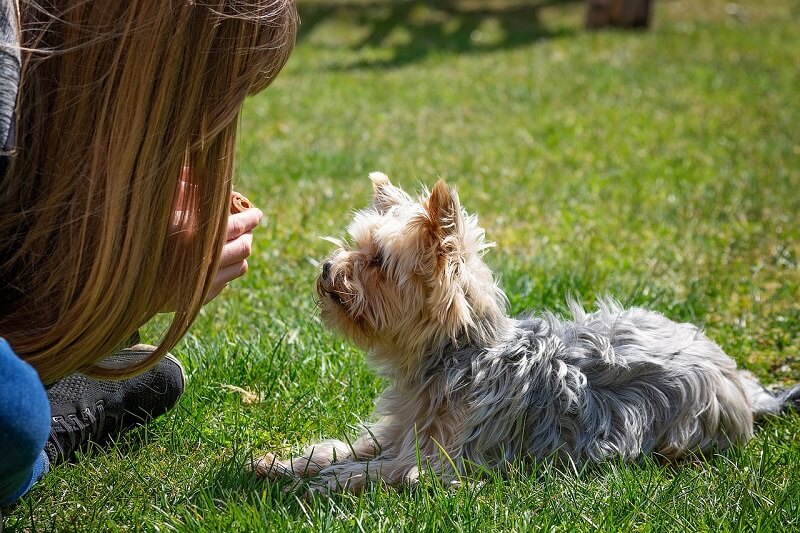
Anxiety
Chewing can be a sign of anxiety. Dogs can become anxious for a range of reasons. Separation anxiety is very common, wherein the dog doesn’t like being alone, but it can also be due to the dog’s history if it’s been rescued, anxiety about a particular smell or object, or fear about a sound. For example, a lot of dogs become very anxious on New Years’ due to fireworks.
It depends on the cause of the anxiety as to how best to resolve it. You can look online for further advice for helping dogs with separation anxiety. It might involve leaving them with an item of your clothing so they can still smell you, or leaving them for short periods to help them adjust more slowly.
If you know your dog is anxious, always try to behave as calmly as possible yourself. Talk in a calm and steady voice to help reassure him that there’s nothing to be scared of. If you think your dog’s anxiety is severe, or you’re otherwise worried, you should talk to your vet.
Consistently say ‘no’
When your dog, whether a puppy or an adult, chews the furniture, it’s important to help him understand that this is unwanted behaviour.
You don’t need to shout, but be firm and consistent. Using a deeper voice signals that you’re not happy with their behaviour. It’s important to say it every time you notice him chewing, and as soon as you notice. If you let him get away with it, it makes it harder for him to understand what’s good and bad.
Pet Hair
Pet hair can be one of the more infuriating parts of having a pet! Protecting furniture from pet hair can be difficult, but there are a few different options to try.
Groom your pet regularly
The better groomed your dog or cat, the less hair they will shed around the house. If you have a long haired dog, you could take them to the groomers to have a haircut every now and again. This will minimise shedding.
You should also brush your dog or cat regularly – sometimes once a day as seasons change and they lose their winter coat. This can be easier said than done, depending on how much your pet likes being brushed! It does help to remove all the loose hairs though so you can throw them away in one go rather than finding them all over the house and your furniture.
While this doesn’t help with pet hair, clipping your dog’s claws can minimise scratches on the furniture too. Some dogs will naturally keep their claws short by walking on concrete or other hard surfaces, but others might need them clipping. It can be a good idea to get this done by a professional.
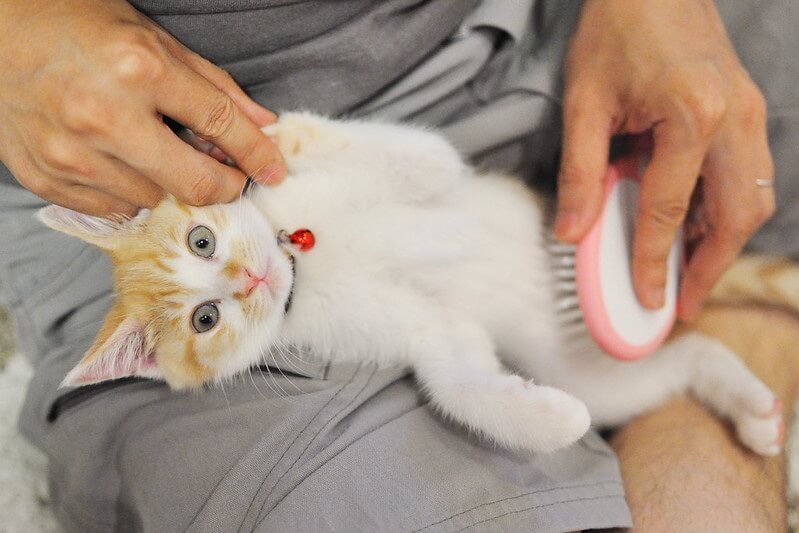
Keep them off the furniture
One way to prevent pet hair on the furniture is to keep your dog or cat off the furniture. Dogs are often easier to train than cats, but both can be taught that the sofa is off limits. It’s a good idea to provide alternatives though, such as a cushion on the floor so your pet can still be in the same room with you.
If you love cuddling up with your pet on the sofa, however, you might not want to do this. You could try instead only allowing your pet on one armchair or sofa, so there’s always a pet-hair-free space for any visitors.
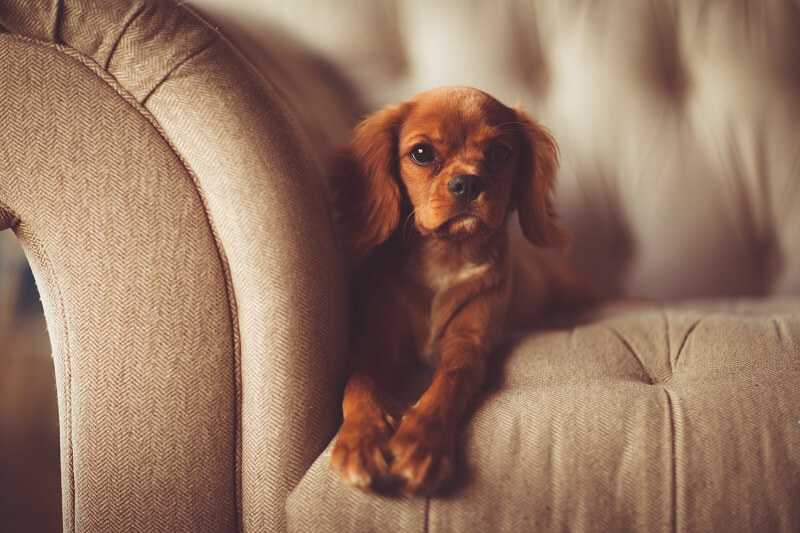
Alternatively, you could try some of the below options…
Use a pet blanket
You can train a dog or cat to only sit on the sofa, bed or other item of furniture if their blanket is covering it. This can help to protect the furniture from pet hair and the blanket can be removed when you don’t want the pet on the sofa – or when it needs washing!
It’s good to choose a specific blanket or sheet that you don’t mind getting hairy! Having a specific one will help your pet to recognise it and will make training easier.
Use a sofa cover
If you don’t want the hassle of a specific blanket, you could invest in a sofa cover. These can be semi-permanently left on the sofa to protect the furniture from pet hair and then removed to be washed or when you have guests coming over.
Wood Furniture Store sell a massive range of beautiful real wood furniture from dining room tables through to bed frames and mango wood coffee tables. Explore our website for more!


